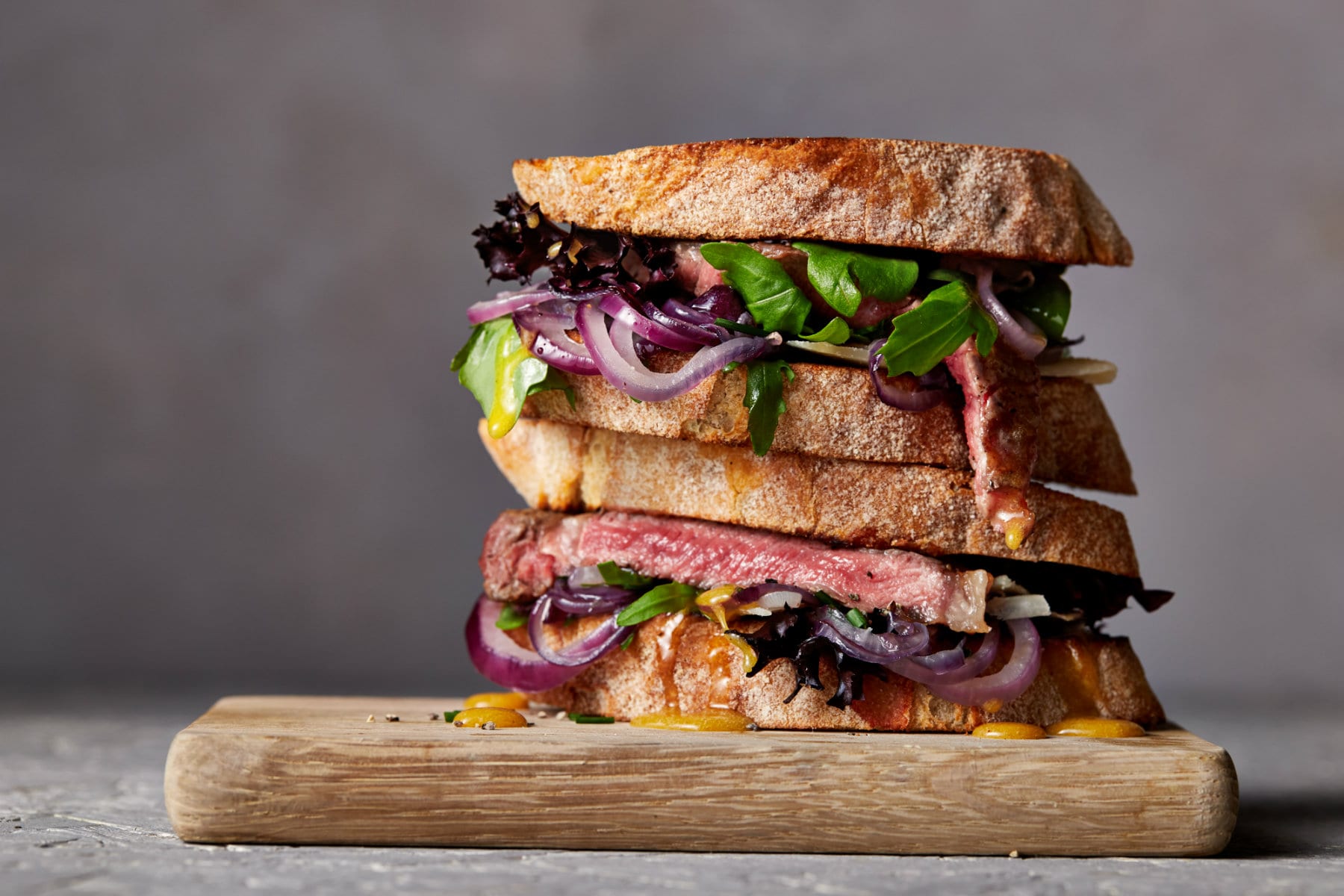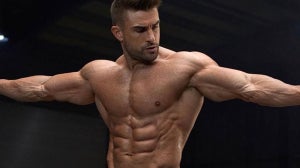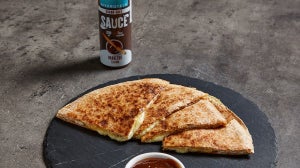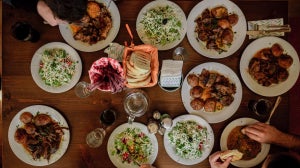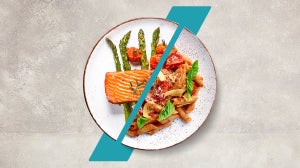
In the last part of the ‘Clean Bulk and Cut - How to Design a Diet’ you will find out how to structure your meals. You will finally create a skeleton of your personalised meal plan, with precisely calculated amounts of macronutrients you need per meal. You will also find a list of fitness ‘staple’ foods you should be hitting your macros with.
No time to waste - make space on your fridge door for the master plan and make some space in your sleeves because these pipes are about to burst!
Step 1-2: How to design a diet/How to calculate your macros
1) How to design a diet: See Clean Bulk and Cut PART 1.
2) How to calculate your macros: See Clean Bulk and Cut PART 2.
Step 3: Structuring Your Meals
By now you should know how to establish your current calorie intake, adjust it to either “bulk” or “cut” and figure out how much protein, fats and carbohydrates you need.
The next step is dividing these into meals and letting the gains begin! However, this step is somewhat controversial as to how many meals per day are the most optimal for muscle gain/fat loss.
So....do you need to carry a mini fridge stacked with chicken filled plastic containers or not?
The answer is… It depends!

Nutrition for Weight Loss
For general weight loss, making sure that you don’t exceed your calorie limit is the key goal, irrespectively of the amount of meals you might have.
Despite the popular belief that eating more often “boosts metabolism” - it is not true. There is also no clear pattern showing that eating more often helps to reduce appetite – that appears to be very individual.
Some people will simply be less hungry when nibbling throughout the day, while others will see several meals a day as an invitation to stuff their face with pie few times a day.
On the other hand, spreading large carbohydrate portions over smaller meals has been shown to reduce post-meal “bad” cholesterol levels. On top of that, spreading your protein intake across several meals will ensure constant supply of amino acids and maximal protein synthesis. Without a doubt that means more optimal health and muscle growth.
Bodybuilding Nutrition
Personally, for the purpose of bodybuilding I would recommend 6 evenly spaced out meals per day. These can be 3 solid (real food) meals alternated with 3 meal replacements shakes.
This is a particularly good solution during your bulk, when you will most likely (at some point) struggle with eating enough calories. It is always easier to drink a shake than to force-feed a basin full of rice! On top of that, the 3 meals + 3 shakes option will give you some flexibility… In terms of having a life. On the other hand, if you are cutting down, you may want to replace some shakes with solid meals – giving yourself a longer lasting feeling of satiety.
Getting back to our case study from the previous parts of the article, we calculated that our imaginary 70kg bodybuilder will need the following amounts of macronutrients.
| Bulk | Cut | |
| Protein | 140g | 140g |
| Fats | 57g | 47g |
| Carbohydrates | 379g | 284g |
…So how do we structure them into actual meals?
Let’s have a look into each of the nutrient one-by-one.
A) Protein
Protein should be simply split evenly among all the meals in your diet.
In this case that means dividing 140g of protein by 6 meals; giving us 23g dietary protein target per meal.
| Daily Protein Target | Number of Meals | Meal Protein Target |
| 140g | 6 | 140g : 6 = 23g |
As previously mentioned, strictly speaking, our bodies do not store protein (amino acids) which could be readily used.
By having a steady supply of dietary protein throughout the day you ensure that your pool of amino acids is always topped up and your body has all the building blocks it needs to build new muscle tissue and preserve the “old” one.

B) Fats
Structuring your fat intake is another not-so widely agreed concept.
A lot of fitness gurus advocate not mixing fats with carbohydrates in one meal, as this can potentially lead to greater fat gain.
Carbohydrate-rich meals will prompt the release of insulin. This storage hormone will put any fat burning processes on hold. The idea is that because of that, the ultimate faith of the fat consumed with carbohydrates will be storage – so long six-pack, huh?
Although interesting, it is scientifically debatable. Without complicating things unnecessarily, as long as you keep your calories in check and make wise food choices, mixing reasonable amount of fat with carbohydrates should make little to no difference. At the same time you won’t restrict your food choices to “fat-free” and “carb-free” options which could be leading to some micronutrient deficiencies.
Saying all of that, I recommend not having fats around your workout (i.e. in a meal before and after). Dietary fat slows down gastric emptying, meaning that the food in your stomach will stay there for longer. Without a doubt you don’t want to be hitting the gym with full stomach. Nor would you want to slow down the delivery of recovery promoting nutrients after the workout.
Therefore, in our case we will divide the daily fat target by 4 meals rather than 6.
| Bulk | Cut | |
| Daily Fat Target | 57 | 47 |
| Number of Meals (excluding pre- and post-workout) | 4 | 4 |
| Meal Fat Target | 57:4 = 14.25 | 47:4 = 11.75 |
C) Carbohydrates
Lastly, it’s time for “the bad fame” nutrient – carbohydrate.
To make the most out of carbohydrates in your diet, you should place them strategically around times of the day when you are the most physically active.
Firstly, this will ensure that you have enough energy to perform the task at hand. For example, if you have a rich carbohydrate pre-workout meal, it will help you top up your glycogen levels, allowing for much more efficient workout. Of course harder workouts means potentially better gains and more calories burnt, aka greater fat loss.
Secondly, during physical activity, the mechanical contraction of the muscles allows for greater uptake of carbs – small proteins which transport glucose into the muscle cells are “pushed” to the surface. As a result, carbs eaten after physical activity are less likely to be stored as body fat.
These are the reasons why I advocate having most (60%) of your carbohydrates split between pre-workout (30% carbs) and post-workout (30% carbs) meals.
The table below shows how to calculate 60% of our imaginary bodybuilder’s carb intake for bulking and cutting and then split it into two meals.
| Bulk | Cut |
| 379g Carbs | 284g Carbs |
| 379g : 100% | 284g : 100% |
| 3.79g x 60% | 2.84g x 60% |
| 227.4g : 2 | 170.4g : 2 |
| 113.7g | 85.2g |
The remaining amount of carbohydrates can be split evenly among the remaining 4 meals.
To work that out simply subtract the 60% of carbs (you just calculated) from your daily carbohydrate target and divide the sum by 4.
| Bulk | Cut |
| 379g Carbs – 113.7g Carbs | 284g Carbs – 170.4g Carbs |
| 151.6g : 4 | 113.6g : 4 |
| 37.9g | 28.4g |

D) Summary
Putting it all together, the table below shows target macros for each meal - assuming that our 70kg bodybuilder works out between meal 3 and 4.
| Meal No. | Protein (g) | Fats (g) | Carbohydrates (g) | ||
| Bulk | Cut | Bulk | Cut | ||
| 1 | 23g | 14g | 12g | 38g | 28g |
| 2 | 23g | 14g | 12g | 38g | 28g |
| 3 (pre-workout) | 23g | 0g | 0g | 114g | 85g |
| 4 (post-workout) | 23g | 0g | 0g | 114g | 85g |
| 5 | 23g | 14g | 12g | 38g | 28g |
| 6 | 23g | 14g | 12g | 38g | 28g |
Step 4: Food Choices
The next step is to pick foods which will match your macronutrient targets. You can have a look into The Zone’s RecipeSection to get some good ideas, read food labels and look up nutrient database websites to find out which foods and in what quantities can meet your demands.
Of course, not all foods have been created equally – there’s “good” and “bad” fat sources, low and high quality protein, processed and un-processed carbohydrates and so on. That is why focusing only on hitting your macros is not the most optimal nutrition strategy. Instead you should base your food choices on fitness ‘staple’ foods, such as the one listed below.
Protein? Dairy (cheese, yogurt, eggs, milk)
? Meat (beef, chicken, lean pork cuts, turkey)
? Fish (particularly high in protein tuna, halibut, salmon, sardines, tilapia.
? Protein Supplements (e.g.Impact Whey Isolate, Impact Whey Protein)
Fats? Avocado
? Eggs
? Oils (olive oil, flaxseed oil, coconut oil)
? Oily Fish (salmon, mackerel, herring, fresh tuna)
? Peanut Butters (almond butter, cashew butter, peanut butter)
? Nuts (almonds, pecans, walnuts, cashews)
Carbohydrates? Fruit & Vegetables
? Legumes
? Oatmeal (e.g. Instant Oats which can be added to your protein shakes)
? Potatoes, Pasta
? Quinoa, rice, grains
Take Home Message
In the last part of the “Clean Cut and Bulk” series we discussed how to structure your meals and gave you a list of food to meet your macros with. The points are:
>> For maximal protein synthesis you should eat more frequently (e.g. 6 times a day.)
>> For convenience you can follow the 3 solid meals + 3 shakes plan.
>> Have even amount of protein in every meal.
>> Avoid fats immediately before- and after- a workout.
>> Time carbohydrate intake around your physical activity to boost performance and avoid fat gain.
Stay strong and keep them gains coming!
Improperly designed restrictive diets can be dangerous; excluding essential nutrients leading to malnutrition and serious health issues. It takes practice and expertise to design a diet meeting all macro- and micro- nutrient requirements, ensuring optimal dietary intakes. Special populations (e.g. adolescent, pregnant women, individuals suffering from medical conditions etc.) may require particular attention to dietary intakes. Any dietary modifications should be accompanied by a supervision of a General Practitioner and/or qualified Dietician. Always consult a qualified personal healthcare provider before making any dietary changes. The following article is provided as educational information only and should not be understand as a medical advice. The author disclaims any liability or warranties of any kind arising directly or indirectly from use of this article.
Our articles should be used for informational and educational purposes only and are not intended to be taken as medical advice. If you're concerned, consult a health professional before taking dietary supplements or introducing any major changes to your diet.

